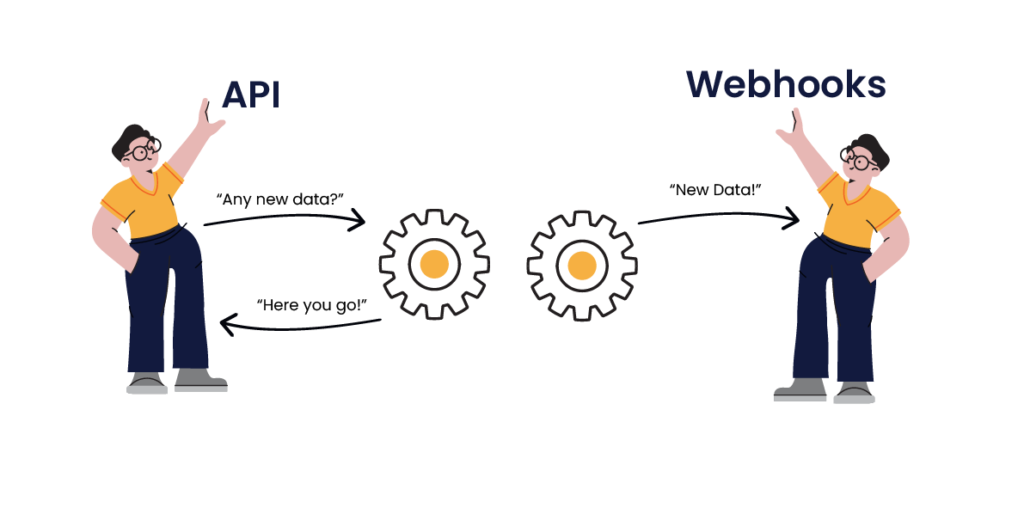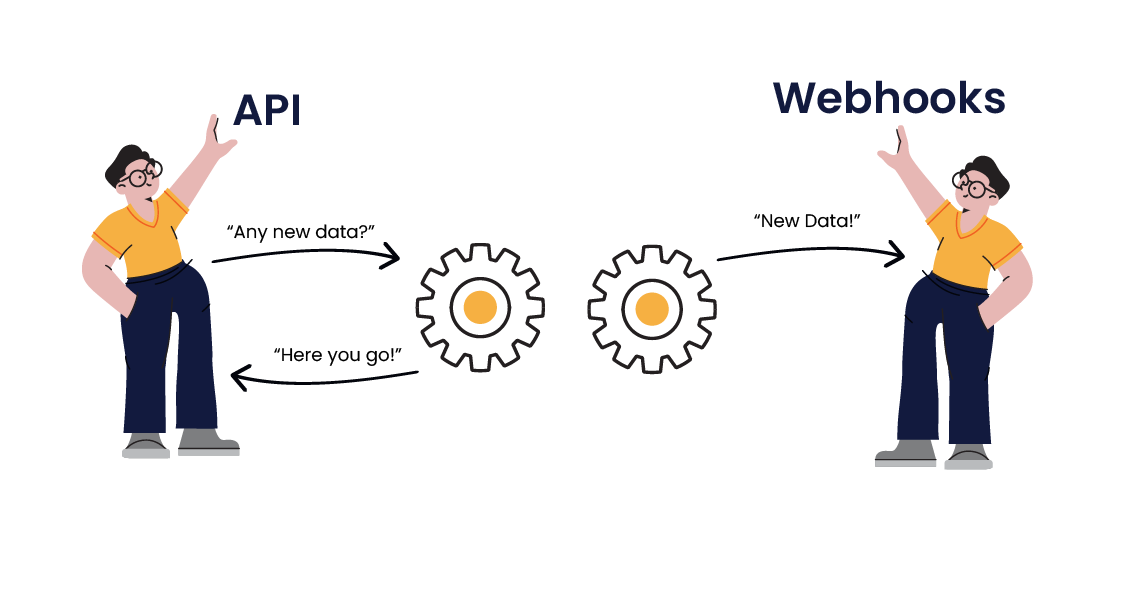
When it comes to building automated workflows, webhook and APIs are two important terms that you should be aware of. Both are capable of effectively connecting applications and sending data over the internet but they are not the same. In this blog we’ll explore the difference between webhooks and APIs and when to use each one.
Let’s start by defining what an API is. An Application Programming Interface (APIs) is a way for two applications to communicate with each other. It acts as a medium from which data can be exchanged between applications in a secure environment. In practical terms, it facilitates communication between two systems by allowing either system to access information from the other through specific calls or requests.
A Webhook, on the other hand, is used for real-time notifications in response to certain events. Think of a webhook as an event-based “push” technology or notification system, whereas an API makes use of “pull” technology or request-response systems that usually require periodic polling in order to collect any new data. With webhooks, you only need to set up the subscription once and any changes will be automatically pushed out instead of having to manually poll throughout the process.
One key difference between these two technologies is how they make requests. While APIs requires an HTTP request made by a client application in order for data to be received; Webhooks can send responses without requiring user input. This means when something changes on one end (such as receiving new data), it will automatically push that updated information out without requiring manual intervention from another side like APIs would typically require.
So which one should you use? Ultimately, it depends on what type of application workflow you need and the amount of work required for both technologies to complete them successfully – if your need is for real-time notifications or updates then a Webhook might be better suited; but if your goal is more bulk processing related then an API might make more sense in this situation because it gives you more control over how your application will manage incoming requests and responses from other applications or services within your framework.
To sum up, whether webhooks or APIs best fits your needs will depend upon what type of task it is performing and how often user intervention is required for successful operations to take place. Knowing when and how each are used can help you determine which one would work best in specific cases and ultimately optimize your productivity levels across different areas in your business ecosystem.
